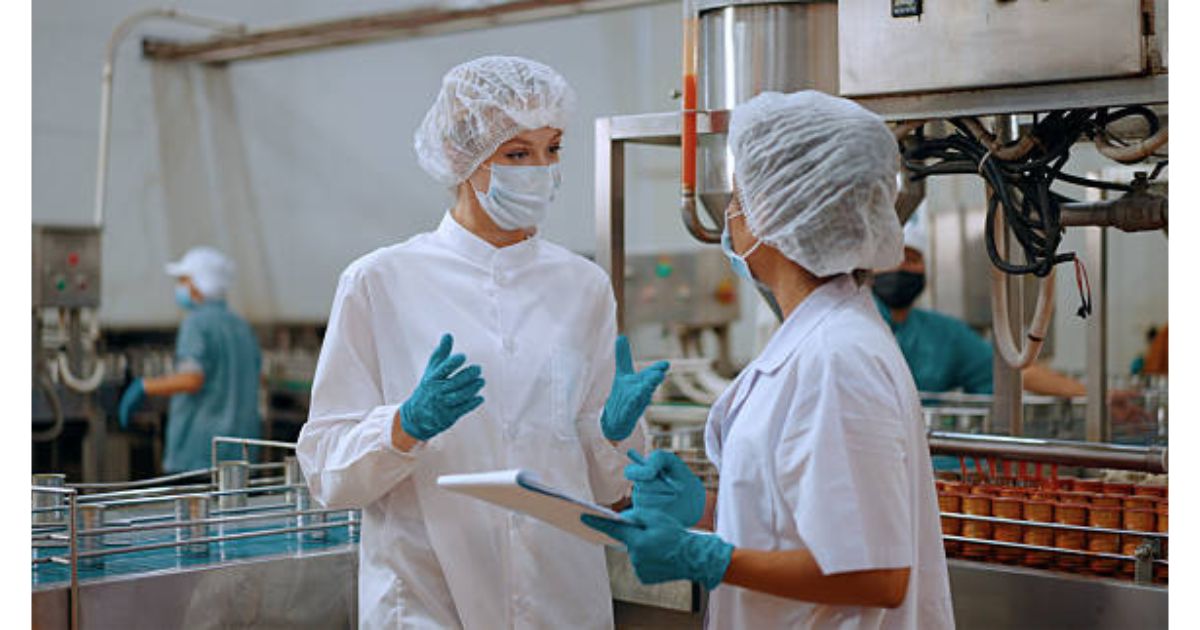Athlete’s foot is a common skin disease of foot that affects millions globally. It’s a fungal infection that targets the skin between toes and on the foot. It causes a lot of discomfort for people of all ages.
Dermatophytes cause this foot disease, spreading fast in places like locker rooms and swimming pools. These areas are warm and moist, making them perfect for the fungus to grow. This is why athletes and active people are more likely to get athlete’s foot.
Recent studies show that understanding this fungal infection better can help prevent and treat it. Healthcare experts are working on new ways to diagnose and manage athlete’s foot. Their goal is to lessen the impact of this common but tough skin condition.
We will look at athlete’s foot from different angles. We’ll talk about its symptoms, how to diagnose it, and new treatments coming in 2025. You’ll learn how to manage and prevent this widespread foot health issue.
Understanding Athlete’s Foot: Medical Overview
Athlete’s foot is a common fungal infection that affects millions globally. It causes discomfort and can lead to serious issues for those dealing with skin and toenail fungus.
The medical world of athlete’s foot is complex. It involves how microbes interact with human skin. Dermatophytes are the main culprits behind these skin problems.
Clinical Definition and Pathophysiology
Fungal infections like athlete’s foot start when certain dermatophyte organisms infect human skin. Key pathogens include:
- Trichophyton rubrum
- Trichophyton mentagrophytes
- Epidermophyton floccosum
Types of Fungal Infections in Athlete’s Foot
Toenail fungus and skin fungal infections show different symptoms. These include:
- Interdigital infection – Between toe spaces
- Moccasin-type infection – Covering entire sole
- Vesicular infection – Developing small blisters
Risk Factors and Susceptibility
Some factors make you more likely to get fungal infections. Main risk factors are:
- Prolonged moisture exposure
- Tight footwear restrictions
- Compromised immune systems
- Frequent public swimming area usage
Understanding these complex biological processes helps patients spot infection risks. It also helps them take steps to prevent them.
Common Signs and Symptoms of Athlete’s Foot
Athlete’s foot shows up in several ways that can be quite uncomfortable. It often starts between the toes, causing intense itching and burning. People with this condition also notice dry skin that cracks and peels.
The main signs of athlete’s foot include:
- Intense itching between toes and on foot soles
- Burning or stinging skin sensations
- Red, scaly patches of skin
- Blisters that might ooze or crust over
- Chronic dry skin with possible skin breakdown
There are clear signs that help tell athlete’s foot apart from other skin issues. The rash looks like a red, inflamed area with scaling patterns. As it gets worse, the dry skin can lead to infections.
| Symptom Category | Clinical Characteristics | Potential Complications |
|---|---|---|
| Skin Texture Changes | Scaling, cracking, peeling | Increased infection risk |
| Sensory Symptoms | Burning, itching, stinging | Reduced foot comfort |
| Visual Indicators | Reddened patches, blisters | Potential spread of fungal infection |
Spotting these signs early can stop it from getting worse and start treatment right away.
Skin Disease of Foot: Diagnosis and Clinical Presentation
Diagnosing skin diseases of the foot is a detailed process. It involves physical exams, lab tests, and a patient’s history. Doctors use these methods to spot conditions like athlete’s foot and plantar warts correctly.

The steps to diagnose foot skin diseases are key. They help find the right treatment for each case.
Physical Examination Methods
Checking foot skin conditions starts with a visual exam. It includes:
- Looking at the affected skin areas
- Checking skin texture and color changes
- Examining the lesions
- Looking for signs like scaling, redness, or blisters
Laboratory Testing and Microscopy
Lab tests are used to confirm foot skin diseases. Important tests include:
- KOH preparation for fungus detection
- Fungal culture tests
- Skin scraping microscopy
- Dermatophyte detection methods
Differential Diagnosis Considerations
It’s important to tell apart similar foot skin issues. Plantar warts and athlete’s foot can look alike. Doctors look at:
- Lesion shape and size
- Where the skin changes are
- The patient’s medical history
- Any underlying health issues
Getting the right diagnosis is key. It leads to the right treatment and avoids complications from wrong diagnoses.
Current Treatment Approaches and Medications

Treating athlete’s foot needs a careful plan to get rid of fungal infections. Doctors often suggest different treatments based on how bad the infection is and its type.
Topical antifungal medicines are usually the first choice for treating athlete’s foot. These medicines directly target and kill the fungus on the skin.
- Over-the-counter topical treatments include:
- Clotrimazole cream
- Miconazole nitrate
- Terbinafine solutions
- Prescription-strength antifungal medications for persistent fungal infections
- Specialized medications for different skin types and infection intensities
Severe or recurring athlete’s foot might require oral antifungal medications. These prescription drugs are needed when topical treatments don’t work well. Doctors look at a patient’s health history before suggesting these treatments.
It’s important for patients to follow the treatment instructions carefully and finish the whole treatment. Keeping the feet clean and applying the treatment regularly helps a lot in getting rid of the infection.
Effective management of athlete’s foot requires patience and a thorough care plan.
Doctors consider several things when choosing a treatment:
- Infection extent
- Patient’s overall health
- Previous treatment responses
- Potential drug interactions
Advanced Therapeutic Options in 2025
The way we treat fungal infections is changing fast. New solutions are being developed to tackle toenail fungus and other skin problems.

Medical science is exploring new ways to fight tough fungal infections. These new technologies give hope to those with resistant athlete’s foot and toenail fungus.
Emerging Antifungal Treatments
Research has found several new ways to treat fungal infections:
- Nanoparticle-based therapies targeting specific infection sites
- Microrobotic systems that precisely eradicate fungal cells
- Advanced reactive oxygen species generation techniques
Novel Drug Delivery Systems
Scientists have come up with smart ways to fight fungal infections. Nanoparticles are leading the way in solving complex fungal problems.
The future of fungal infection treatment lies in targeted, precise interventions that can penetrate biofilm structures and eliminate infections at their source.
Clinical Trial Developments
Current clinical trials are looking into new treatments for fungal infections. Researchers at the University of Pennsylvania have made big progress with microrobotic systems that can:
- Locate infection sites with unprecedented precision
- Deploy targeted treatment mechanisms
- Eliminate fungal cells rapidly
These breakthroughs are a huge step forward in treating toenail fungus and other fungal infections. They offer patients new hope for effective treatment in 2025.
Prevention Strategies and Foot Care
Keeping your feet healthy means taking steps to prevent fungal infections. Athlete’s foot can be stopped with good hygiene and smart choices. Knowing how to avoid risks helps keep your feet healthy and prevents pain from corns and calluses.
To stop athlete’s foot, you need to control moisture. This is key to preventing the fungus and blisters.
- Keep feet clean and dry at all times
- Change socks frequently, after you’ve been active
- Use antifungal powders in shoes and between toes
- Wear shoes that breathe and wick away moisture
Places like locker rooms and swimming pools are high-risk for fungal infections. Always wear protective footwear in these places to avoid touching contaminated surfaces.
Good foot care is more than just preventing athlete’s foot. Checking your feet often can catch corns and calluses early. This helps treat them before they get worse.
- Trim toenails straight across
- Moisturize feet to prevent dry skin
- Use cushioned socks to reduce friction
- Rotate shoes to let them dry out
Prevention is always more comfortable and cost-effective than treating an established infection.
People with diabetes or weak immune systems need to be extra careful with their feet. They should see doctors often to prevent serious problems.
Market Analysis and Treatment Accessibility
The world of treating athlete’s foot is changing fast. It brings both challenges and chances for those who need treatment and for doctors. We need to look at the economy, how easy it is to get treatment, and what’s new in healthcare.
Research shows that more options for treating athlete’s foot are coming. People are learning more about keeping their feet healthy. This leads to new products and services in the market.
Global Market Trends
- Projected market growth of over-the-counter treatments
- Rising consumer awareness about athlete’s foot prevention
- Expanded range of topical and oral antifungal medications
Healthcare Cost Analysis
The cost of treating athlete’s foot can vary a lot. It depends on how complex the treatment is and where you are.
| Treatment Type | Average Cost | Insurance Coverage |
|---|---|---|
| Topical Creams | $10-$25 | Often Fully Covered |
| Prescription Medications | $50-$150 | Partially Covered |
| Advanced Treatments | $200-$500 | Limited Coverage |
Insurance Coverage Patterns
More insurance companies are seeing athlete’s foot as a real medical issue. Patients should check their insurance to see what they can get back.
“Understanding treatment accessibility is key to managing athlete’s foot well” – Dermatology Research Institute
Good planning and teaching patients are important for better treatment results. This is true for this common foot problem.
Complications and Long-term Management
Untreated fungal infections, like athlete’s foot, can lead to serious health issues. Psoriasis of the feet and ongoing skin problems need careful long-term care. This is to avoid serious complications.
Key complications from untreated foot fungal infections include:
- Bacterial secondary infections
- Spread of infection to other body parts
- Chronic skin damage
- Potential immune system complications
People with recurring fungal infections are at higher risk. Immunocompromised individuals are even more at risk. Their simple athlete’s foot can turn into more serious skin problems.
Long-term management strategies include:
- Regular dermatological screenings
- Consistent antifungal treatments
- Preventative hygiene practices
- Monitoring underlying health conditions
Healthcare experts suggest a complete approach. This addresses both current symptoms and future risks from fungal infections.
Early intervention is the best way to prevent severe skin problems.
Conclusion
The world of foot health is changing fast, with athlete’s foot being a big challenge. New ways to diagnose and treat this fungal infection are helping a lot. Now, patients have better ways to prevent and treat it.
In 2025, medical studies show how important it is to take care of your feet. Knowing the signs of athlete’s foot early can help a lot. New treatments and ways to deliver medicine are making healing faster and more effective.
Preventing athlete’s foot is key. Keeping your feet dry, wearing the right shoes, and using antifungal powder can help a lot. Also, getting your feet checked regularly and keeping them healthy is very important.
If you have foot problems that keep coming back, see a doctor. They can give you a treatment plan that fits your needs. This is very important for your foot health.
FAQ
Q: What exactly is athlete’s foot?
A: Athlete’s foot is a common fungal infection. It mainly affects the skin of the feet, starting between the toes. It’s caused by fungi that love warm, moist places. This can make your skin itch, burn, and peel.
Q: How do I know if I have athlete’s foot?
A: Look for a red, itchy rash between your toes. You might also feel burning or stinging. The skin can become dry, scaly, and even crack or peel.
Q: Who is most at risk for developing athlete’s foot?
A: People with weak immune systems are at risk. So are those who use public pools or showers a lot. Wearing tight shoes and not drying your feet can also increase your risk.
Q: Can athlete’s foot spread to other parts of my body?
A: Yes, it can spread to your hands, nails, and groin. It’s very contagious. You can catch it by touching someone with it or by sharing towels or shoes.
Q: What are the most effective treatments for athlete’s foot?
A: Over-the-counter creams, sprays, or powders are usually effective. For severe cases, your doctor might prescribe stronger treatments. Keeping your feet dry and using powders can help prevent it from coming back.
Q: How can I prevent athlete’s foot?
A: Keep your feet clean and dry. Wear shoes that breathe. Use antifungal powders and wear shower shoes in public. Change your socks often and let your shoes dry out between wearings.
Q: How long does athlete’s foot typically take to heal?
A: Mild cases can get better in 1-2 weeks with treatment. More serious cases might take 2-4 weeks. Severe or recurring cases might need longer treatment or oral medications.
Q: Is athlete’s foot the same as toenail fungus?
A: No, they are different. Athlete’s foot affects the skin of your feet, while toenail fungus infects your toenails. But, if left untreated, one can turn into the other.
Q: When should I see a doctor about athlete’s foot?
A: See a doctor if it doesn’t get better with over-the-counter treatments. Also, if it spreads, causes a lot of pain, or if you have diabetes or a weak immune system.
Q: Can I continue exercising with athlete’s foot?
A: You can exercise, but be careful. Wear shoes that breathe, use antifungal powder, and keep your feet dry. Avoid walking barefoot in public. If it’s severe, rest and treat it first.
















[…] Untreated athlete’s foot can really mess up your day. The itching and discomfort can make walking and exercising hard. Getting the right treatment is important to stop it from spreading and to feel better fast. […]
[…] clinical trials are testing new methods for anoxic encephalopathy. These could be major breakthroughs. They show a big step forward in treating complex brain […]
[…] سردیوں میں جلد کی خشکی دو منٹ میں ختم کریں۔ پانچ منٹ میں لو شن گھر پر تیار کریں۔ Top Best Home Remedies For Glowing Skin in 2025 Best Homemade Face Mask for Glowing Skin in 2025 Research 2025: Skin Disease of Foot Athlete’s Foot […]